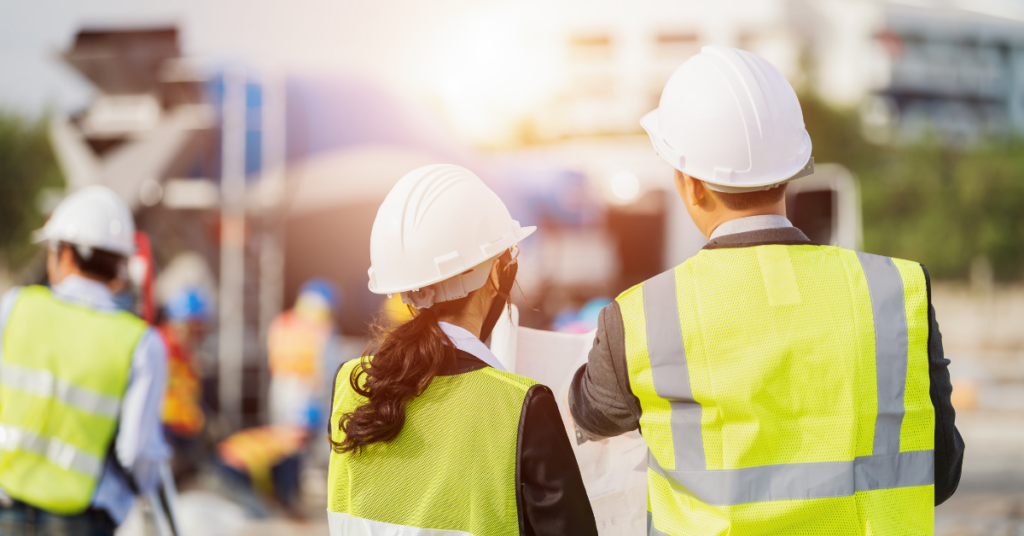High Tech Solutions to Get Ahead in Construction

Construction companies must embrace cutting-edge tech, or else they’ll get left behind in a world where seemingly everything is available at consumers’ fingertips.
People want builds and upgrades completed faster and more efficiently than ever before. And the only way construction companies can keep up with those demands is by using the most advanced tech.
The industry has transformed entirely in the past two decades, taking giant innovative steps in that period.
Not sure about what kind of tech you should invest in?
According to an article from business.com and another from Construction Dive, the following high-tech solutions are helping construction businesses thrive.
Wearable Tech
Wearable tech in construction is meant for the industry’s harsh demands and withstanding plenty of abuse.
Smart-helmets with pull-down visors include headbands for tracking health, cameras at the rear and front to help with depth perception, multiple sensors, and wireless connectivity.
When workers wear these helmets, they benefit from immediate data access, real-time communications and, data recording capabilities. There’s even an augmented reality overlay. All these features are available in the pull-down visor alone.
The high-tech safety vests and health monitors now offered to workers streamline productivity and ensuring the safest job sites.
With the connectivity offered by the hard hats, supervisors and workers will know of any onsite fatigue or medical problems. Furthermore, smart boots can monitor the wearer’s location, notifying emergency workers where somebody is in case of an accident.
Robotics and 3D Printing
Amazingly, entire buildings are being made with robotic building arms and 3D printers. Concrete, extruded concrete, and plastic to “print” components/buildings are all involved in this tech. These solutions are being used at broader scales almost day-to-day.
In Dubai, you’ll find an office building that’s entirely 3D printed–the first of its kind.
Robots are also performing the following functions:
● Bricklaying
● Excavation
● Demolition
● Performing work that’s unsafe for humans
3D printing is also being used to construct parts of buildings where doing so will reduce costs and increase time efficiency. The computers involved work 24/7 to produce these parts.
It’s also worth noting that while metal is expensive to print in 3D, molds are proving cost-efficient. Moreover, 3D printing has already successfully helped build demonstration houses, walls, and bridges. Plus, there have been advancements in mapping with regards to robotics. Building layouts and other inside objects are mapped – virtually – through this tech.
On top of that, a New York City-based construction team for the 50 Hudson Yards used a hydraulic robotic machine. The device climbs up a building’s side, offering walkways and stability for project workers while building a steel frame.
After the workers install steel on multiple floors, the Despe Self-Climbing Kokoon’s hydraulic cylinders are activated. From there, the machine reaches the following tiers.
Impressively, the Kokoon moves tier-to-tier without the help of a crane–and there’s no need to halt any onsite work.
Enhancing Building Information Modeling (BIM) Collaboration
When a single coordinated computerized system mixes solid work processes with tech, it’s known as advanced collaborative BIM.
BIM models connect with mobile devices, allowing companies to give their talent any necessary data (e.g., 3D digital building plans). This shared information can also include manuals, images, or specifications.
For your construction business to thrive, you must invest in these high-tech solutions to keep up with – and get ahead of – the pack. However, there’s a caveat to this notion: all the technology in the world doesn’t outweigh quality workers. You need to invest in a top-notch talent who knows how to get the best out of these new and exciting tools. Contact RHM Staffing today to access those high-level workers.
